Definition of the disease. Causes of the disease.
Pediculosis (pediculosis – from the Latin “lice”) is a human parasitic disease manifested by itching of the skin at the site of lice bites.
Three species of lice can parasitize humans:
- The head louse Pediculus humanus capitis causes head lice;
- The cloak louse Pediculus humanus corporis causes cloak lice;
- Pubic louse Phthirus pubis L.- pubic pediculosis, or phthyriasis (Phtheiriasis – from Greek “spoilage”)
Pediculosis is found in all countries of the world. The disease affects all segments of the population – lice can be contracted accidentally, not just through poor hygiene (e.g., reclining on a headrest in a train carriage or playing contact sports on carpets/tats).
In the United States, 6 to 12 million children between the ages of 3 and 11 are diagnosed with pediculosis. The incidence rate in Russia is 178-224 cases per 100,000 population (about 300,000 cases annually) [1]. If we estimate the incidence rate by the number of pediculicide products sold, it will be 3-4 times higher than the minimum. In France, pediculosis occurs in 49% of the population, in Israel – in 20%, in Great Britain – in 25%.
The disease occurs in the sexes, but girls are sicker than boys. Pediculosis is less common in African Americans, probably because of the peculiarities in the closed hair. Although mostly lice have adapted to capture non-cylindrical hair, the incidence rate here is only 3.7%.
The life cycle from egg (nits) to adult is 25-35 days. Lice are transmitted from hair to hair, they cannot jump or fly from one person to another without direct contact. However, lice are able to move at a speed of 23 centimeters per minute. How Infestation Happens:
- by direct contact with an infected person, especially in organized groups (schools, boarding schools, kindergartens or camps) by any close contact;
- by contact with infected objects – other people’s hats, hairbrushes, hair accessories, cell phones, towels, etc;
- pubic lice are usually sexually transmitted, so close physical contact (intercourse, sharing a bed, underwear) is necessary for infection;
- Young children and infants become infected from their parents through shared bedding or breastfeeding
Risk factors for pediculosis
- prolonged overcrowded living (in the army, kindergarten, small apartment) – increased risk of close physical contact with the infected person and his/her household items (bedclothes, clothes, combs);
- Unsanitary living conditions – infrequent showers, infrequent changes in bedding and clothing;
- low socio-economic status.
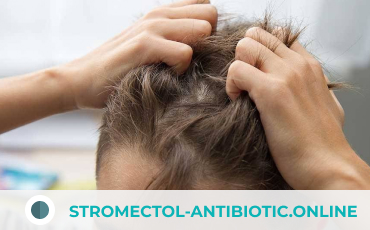
Symptoms of head lice
Manifestations are the same for all types of pediculosis. The severity of the local reaction depends on the immunological reactivity of the body.
You should consult a doctor when the following symptoms appear:
- Itching of the scalp, body, crotch, leading to scratching.
- Feeling that something is “moving” in the hair and/or on the body.
- Papular-urticular red rash (papular urticaria).
- Enlargement of lymph nodes, in case of head pediculosis – occipital or behind the ear, in case of pubic – groin group.
- In case of accession of bacterial infection (pyoderma) – appearance of purulent crusts.
A prolonged lack of treatment and hygienic measures results:
- A tangle is a glued mass of hair, lice, nits, crusts, and skin scales.
- “Vagrant skin” – widespread pigmentation of the skin, its thickening (lichenification), flaking, erosive surfaces.
The site of a pubic louse bite leaves specific blue spots – macula coerulea, similar to small bruises.
Sometimes pediculitis occurs – a rash far away from the lesion, caused by auto-sensitization (hypersensitivity of the body to allergens of its own tissues) and resembling the rash of allergies or viral infections.
Pathogenesis of pediculosis
A louse feeds on blood by dipping its proboscis into the skin. When bitten, the saliva of the insect gets into the wound, which is foreign to the body. Getting into the blood, the secret causes a reaction of the immune system, which is manifested by itching and redness of the skin at the site of the bite. Itching leads to irritation and numerous skin scratches. Skin lesions, in turn, are entry gates for various infections.
It is reported that up to 30% of patients with pubic pediculosis have more than one sexually transmitted infection. In recent years, there has been a dramatic decrease in the incidence of phthyriasis in some regions. Researchers attribute this to a currently popular cosmetic procedure, bikini waxing. Infection does not occur, since lice have nothing to attach to .
There may also be an inflammatory reaction from the lymph nodes in the affected area – their enlargement and soreness.
Classification and stages of pediculosis
There are three forms of pediculosis: head, cloak and pubic. There is also a mixed form.
Head lice are caused by head lice. It parasitizes on the scalp and neck.
The head louse is an exclusively human parasite that is not transmitted from animals or animals. It is a wingless insect with a grayish-white body, 2-4 mm long (the size of a sesame seed). After a louse becomes full, the abdomen turns red. The louse has 6 pincer legs, which are suitable for dwelling on circular hairs (head hair, moustache, beard).
A head louse lays eggs (nits) on the hair shaft. The nits are covered with a protective sheath and provided with a lid. They are about 1 mm long and are firmly attached to the hair with a special sticky substance that is sometimes mistaken for dandruff. The number of nits may reach several thousand (one louse produces 200-300 offspring in its lifetime). The live nits (with an egg) are creamy yellow in color; the non-viable ones (without an egg) are white.
After 8-10 days at the right temperature (+28°C – scalp heat), a nymph louse hatches from the nits, grows, has several molts, and becomes an adult in 10-15 days, mating and giving off offspring. Adult lice can survive for up to 55 hours without a host.
A louse lays eggs close to the root. When the hair grows back, the nits move away from the surface of the skin. Knowing that the hair growth rate is 0.5 mm/day, you can calculate when the infestation occurred. For example, if the nits are found at a distance of 15 cm from the skin, the infestation occurred about 9 months ago.
Cloth lice are caused by a louse that lives on clothing and sometimes moves to the skin to feed. The reaction is the same as to head lice bites.
A dressing louse is oval in shape and larger than a head louse. Lives and lays nits in the seams of laundry or clothing. Most often found in people who aren’t clean and don’t change clothes for a long time or don’t wash often. Lives for 18 days. Females lay about 300 nits, after 8-10 days nymphal lice hatch out and turn into adults after 14 days. Lice live for up to 24 hours without food. Once on the skin, they cling to hairs. The bite leaves pinhead-sized spots on the body with hemorrhages (bleeding into the skin) in the center. Favourite localizations are close tissue contact sites (waist, lower back, neck, shins). Studies have shown that head lice and head lice are members of the same species. It is believed that head lice evolved from head lice when people started wearing clothes.
Pubic pediculosis (phthyriasis) is caused by pubic lice. These insects mainly live on the pubis, less often in the armpits, on the chest, and on the eyelashes of the upper eyelids. The disease is manifested by itching, rashes, and scratching. Pubic louse is also called a crab louse. The name comes from the enlarged pincer-like second and third pairs of legs that give it the appearance of a crab. If heavily lodged, they can be found on the eyelashes, eyebrows, and beard. The pubic louse is almost round and 1-1.5 mm long. It clings to the skin very firmly and is virtually impossible to tear off. During its 30-day life cycle, each female lays about 2-3 batches of 25 eggs at the base of hairs. After 6-8 days, the nymphs hatch and begin to feed immediately. Without food they die within 24 hours.
Classification of pediculosis by course: uncomplicated, complicated
Complications of pediculosis
- Pediculosis is often complicated by secondary infections caused by pyogenic streptococcus and Staphylococcus aureus. It is caused by scratching the skin. Severe purulent processes may develop – phlegmon, lymphangitis, bacteremia. The main signs of these diseases – pain, fever, quickly spreading redness of the skin and its swelling.
- When the eyelashes and eyelids are affected, blepharoconjunctivitis often develops. This is an inflammatory process of the skin of the eyelids and the connective membrane (conjunctiva), manifested by hyperemia (redness), crusts on the cilia, discharge from the eyes.
- Some people experience obsessive-compulsive neurosis or dermatosis delirium after lice and nits have been eliminated. This is a pathological belief in one’s own infestation of parasites, in which the person is bothered by a constant itching of the head or the feeling that someone is crawling on the skin. However, there are no objective signs of the disease.
- Irritant (simple, irritated) chronic dermatitis. Itchy skin may persist for weeks after effective treatment .
- Social stigmatization (social labeling). During the disease, the person usually experiences marked shame and embarrassment and cannot live a full life.
- Dressing lice carry dangerous infectious diseases such as trench fever, relapsing fever, and typhus.
Diagnosis of pediculosis
- Gathering of complaints and clarification of epidemiological anamnesis: whether there is no quarantine in kindergarten or school, sick at home.
- Visual examination for head lice with a comb for combing out hair.
- Examination with a magnifying glass (especially relevant for signs of pubic pediculosis – blue spots).
- Examination under a Wood lamp. Live nits give a glow, non-viable ones do not.
- Dermatoscopy can be used to distinguish live nits from empty nits.
- Microscopy and bacteriological culture of the skin are necessary to confirm impetigo (secondary bacterial infection of the surface layers of the skin) and to determine its sensitivity to drugs.
It should be noted that pubic lice on the scalp, eyelashes and eyebrows in children can be a sign of sexual abuse.
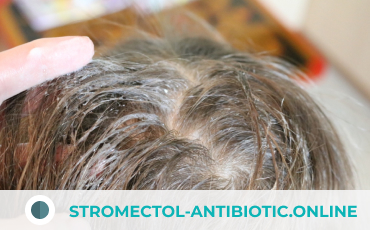
Treatment of pediculosis
Hospitalization in case of pediculosis is not The treatment of pediculosis is not carried out unless there are special indications: unfavorable sanitary and hygienic living conditions, inability to provide the necessary therapy by oneself. Treatment is carried out at home. Isolation of the patient is necessary, as well as anti-epidemic and disinfestation measures.
Treatment of pediculosis is aimed at destroying the pathogen at all stages of the life cycle. When prescribing treatment, it is necessary to explain to the patient how to use the product (method of application, exposure time, number of treatments). If the recommendations are not followed, there is a high risk of treatment failure as well as the development of lice insensitivity to drug therapy. In case of dressing head lice, treatment of patients and their belongings must be carried out by special licensed disinfecting organizations. For disinfection of rooms, furniture, as well as linens, clothes and bedding, aerosolized pediculicidal agents are used.
Three methods of therapy are used: mechanical, physical and chemical. Additional treatment methods are required if complications develop.
The mechanical method of removing lice is suitable in the case of single individuals. A special comb with fine teeth is used (the distance between the teeth is 0.2-0.3 mm). How to apply:
- Wet and brush your hair to prevent tangling (you can use conditioner or balm before doing this).
- Place the comb so that the teeth are touching the scalp. Comb through all your hair at least twice. After each combing it is necessary to inspect the comb and necessarily treat it with boiling water or 70% solution of alcohol.
To facilitate combing out the nits the day before, it is recommended to apply petroleum jelly oil or a combined preparation containing coconut oil, anise oil and ylang-ylang oil to the hair.
Evidence evaluating mechanical removal as an alternative to pediculicide therapy is limited and contradictory.
The physical method involves the destruction of lice by exposure to high or low temperatures. To remove nits from clothing and hats, the household uses boiling linens, ironing clothes with a hot iron. Things that cannot be washed can be treated in steam-air-formalin, steam and combined disinfection chambers and in air disinfection chambers. These methods are considered quite effective.
The chemical method, or medical treatment of pediculosis, is based on the use of pediculicides – preparations designed to kill lice. There are products in the form of lotions, shampoos, soaps, emulsion concentrates, means in aerosol packaging, etc.
Remedies for pediculosis
1.Pyrethroids
- Permethrin 1% cream rinse or 5% cream. Sold without a prescription, it is a reasonable first choice drug for the treatment of pediculosis, unless resistance to it is proven. Apply to towel-dried hair and rinse with warm water after 10 minutes. Approved by FDA (Food and Drug Administration) for treatment of lice in adults and children over 2 months of age. The drug has no effect on the nits, so after 7-10 days it is recommended to repeat the treatment to kill the lice that have not yet hatched at the time of the first treatment. A third treatment on day 13-15 may be required to remove nymphs that have survived and hatched.
- Pyrethrins/piperonyl butoxide (gel, shampoo, solution for external application) applied to dry hair for 10 minutes may be effective, but there is evidence of resistance (resistance) of lice to these preparations. In this case, it is recommended to use alternative products with a different mechanism of action.
2.Organophosphorus compounds (OPC)
- Malathion 0.5% solution. More effective than permethrin. Apply to dry hair, wash off after 8-12 hours with shampoo. Approved by the FDA for topical treatment of pediculosis in adults and children over 16-18 years of age. May be recommended if permethrin resistance is suspected. Kills 88% of lice in 10 minutes and 100% of lice in 20 minutes.
- Fenthion. As an active substance it enters preparations either alone (20%, 24%) or in combination with permethrin (total concentration – 10%, 20%); according to manufacturers’ instructions, the concentration of the working emulsion is from 0.1% to 0.25%.
3. Benzyl benzoate
20% is included in preparations against lice in spray form (holding time – 30 minutes, single treatment) and in lotion form (holding time – 10 minutes, single treatment). Benzyl alcohol 5% is effective for elimination of live lice. It is applied to dry hair for 10 minutes once a week for 2 weeks. Approved by the FDA for the treatment of lice. The most common adverse reactions include itching, erythema (limited redness of the skin) and eye irritation.
4.Polydimethylsiloxanes (dimethicones)
These are synthetic silicone oils that are highly safe and effective against lice. They are available in lotion and spray form. Dimethicone blocks the respiratory system of lice, as a result of which they are killed. There is evidence that dimethicone is also effective against nits [28]. The lotion should be applied to dry hair from the base to the ends and to the scalp, allow the hair to dry naturally, leave for 8 hours (or overnight), then wash off with normal shampoo. Repeat the course of treatment in 7-10 days. Dimethicones are also used in the form of shampoo containing mineral oil klearol (69.25%). Shampoo stand for 10 minutes, repeat treatment in 7-10 days.
5.Isopropyl ester of myristic acid (isopropyl myristate)
It is used in liquid form, which contains a mixture of isopropyl myristate (50 %) and cyclomethicone (50 %). The preparation is applied for 10 minutes, in 7-10 days the treatment is repeated [23].
6.Anise and clove essential oils
Considered to be quite effective in the treatment of head pediculosis. They are used in the form of an alcohol lotion, kept for 30 minutes. A single treatment is sufficient.
Treatment of pregnant and nursing women
In case of head lice in this group of patients a solution of permethrin prepared from 5% emulsion concentrate in ethanol or a lotion containing 4% dimethicone may be prescribed.
Treatment of pediculosis in children
Most anti-lice medications are approved for use from the age of 5 years. Exception:
- 1% permethrin-based gel is approved for use in children from 1 year of age. The gel should be left on for 40 minutes; a single application is sufficient.
- A preparation containing a mixture of malathion and permethrin (0.5% and 1%, respectively) and the synergist piperonyl butoxide (4%) is approved for use from 2.5 years of age. The preparation should be held for 10 minutes and a single treatment is required.
In the presence of concomitant allergic disease (atopic dermatitis), it is recommended to consult a dermatologist for individual selection of the drug.
If eyelashes are affected, they are smeared with petroleum jelly 2 times a day for 7-8 days or eye ointment with physostigmine is used 2 times a day for 1-2 days.
Treatment of pediculosis complicated by secondary bacterial infection
External therapy is used: drying with any antiseptics (solutions of aniline dyes, povidone iodine, etc.). Antibacterial therapy is administered locally or systemically, as prescribed by the physician.
Oral medications are not FDA-approved for the treatment of lice, but are sometimes used to treat head lice that are difficult to excrete:
- Trimethoprim-sulfamethoxazole 5 mg/kg twice daily in combination with permethrin may increase the cure rate.
- Oral ivermectin 400 mcg/kg with a repeat dose after 7 days
It is not recommended in the treatment:
- Use petroleum jelly, vinegar, mayonnaise, butter or margarine, and vegetable oils. Lice are able to close their airways to prevent the oily substances from entering them, and to reopen them when the substance is washed away. Treatment with these substances is not capable of killing significant numbers of lice.
- Drying the head with a hair dryer using hot air can cause lice to become airborne and get on other people
- Shaving the head (effective, but impractical)
- Using flammable or toxic substances such as gasoline or kerosene.
- Use vinegar, acetone, bleach, vodka and WD-40 grease. These substances negatively affect the hair and scalp and inhibit the therapeutic activity of permethrin.
- Use dye sprays that dye insects and nits in bright neon colors. Such products do not kill lice and also reduce the effectiveness of permethrin. Not recommended by the National Pediculosis Association due to lack of safety and efficacy studies.
Hygiene in the treatment of pediculosis: daily cleaning of rooms, boiling linen, ironing clothes with a hot iron, disinfecting combs and brushes.
Prognosis. Prevention
The prognosis for life with pediculosis is favorable. With treatment, most patients recover without any long-term consequences.
The following cases can lead to re-infection of head lice:
- failure to comply with doctor’s orders;
- If you do not follow the directions for use for the medicine;
- If you choose the wrong dosage form (e.g., shampoo);
- in the absence of repeated therapy;
- In case of reinfection;
- In case of persistence of live nits;
- in case of resistance to antipediculosis agents.
Preventing head lice
- Do not use items that could have lice on them: other people’s hats, combs, hair accessories, clothes, towels, bed sheets.
- Avoid direct “head to head” contact.
- Perform regular hygiene measures: daily cleaning of rooms, disinfection of combs and brushes, regular laundering of underwear and clothing.
- Educational programs for children and parents can be useful for combating lice in schools and daycare centers
In case of infection
- Persons affected by pediculosis are not allowed to attend kindergarten or school until they have fully recovered. Discharge is possible if the lice and nits examinations are negative three times.
- After convalescence, you will be monitored for one month. This is to be done in case the treatment is not sufficiently effective or if there is a reinfestation.
- All family members and contacts are examined (once every 10 days). If live lice or nits are found within 1 cm of the scalp, they must be sanitized.
- Prophylactic use of permethrin 1 % is permissible on a mass scale only if more than 20 % of the collective is infested and if there are direct household contacts.
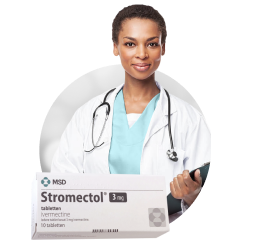

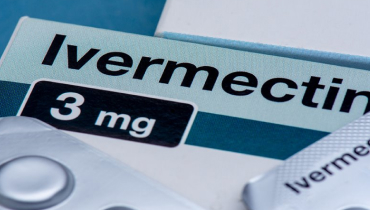
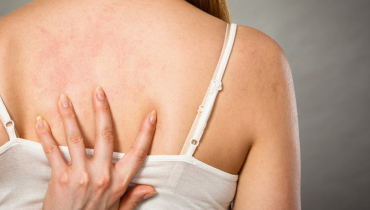
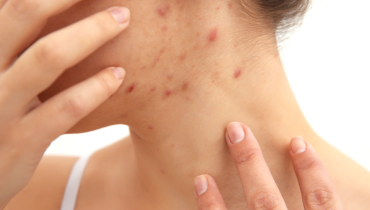
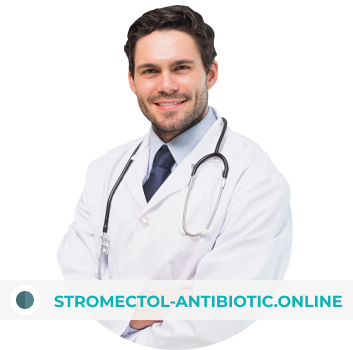






I received the package a few days ago. Thank you so very much! Everything was perfect. I do appreciate your great service and will most definitely order again from you. I'm glad to say that I can recommend you with total confidence. Thanks
Yeah! The package arrived very quickly. Thanks!
Everything is fine! Thanks!